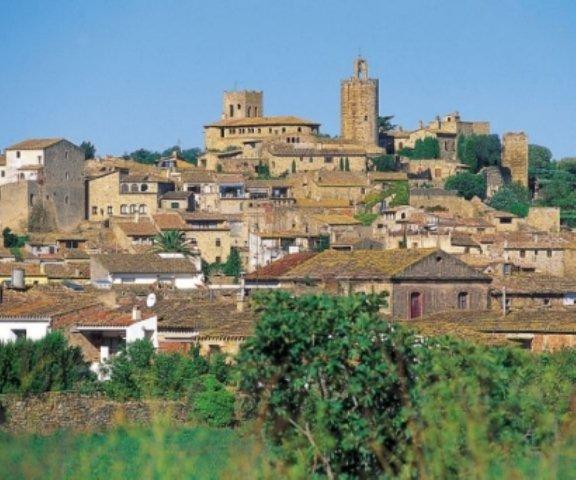| Pals | |
|
|
|
|
1/2 Day |
|
|
A
few kilometres from the Mediterranean Sea, right on the Costa Brava, lie
the medieval streets of Pals. The county of Baix Empordą in the province
of Girona has in this town a lovely old quarter, declared a Historic
Artistic Site. In the Gothic quarter of Pals, pretty cobbled streets
flanked by aristocratic houses await you. Pals beach completes the visit
to the walled town. At any of these points, you can try the area's cuisine,
based on products from both the sea and of the mountains. The
Costa Brava, the wild coast of the province of Girona, has a medieval town
a few kilometres from where it meets the sea. Its historic centre stands
on a hill surrounded by plains, which were originally marshland. You have
to go back to the 9th century - the period to which its castle belongs -
to find the first written documents mentioning this town. Continuous
warlike confrontations have meant that over the centuries only the Keep of
this defensive construction has been preserved. It is a circular
Romanesque tower built between the 11th and 13th centuries. The 15-metre
tower stands on a natural rock platform in which many Visigothic tombs can
be found. During the 15th century it was used as a belltower, which is why
it is known as the Torre de las Horas (Tower of the Hours). Gothic quarter Nowadays,
the site of the castle is occupied by the house of the Pi i Figueras
family, promoters of the restoration of the Gothic Quarter of Pals. Of
modern construction, this house maintains the same architectural features
as the rest of the town. Cobbled streets interrupted by semicircular
arches, faēades with pointed arched windows and stone balconies are among
Pals' distinctive features. The
wall is another element that takes the traveller back to the Middle Ages.
Four square towers remain standing today, although they date from the 12th
century. They are towers with their own names, like Ramonet, Rom, Xinel·lo
and Hospital. Other
points of interest are the Josep Pla viewpoint, the Plaza Mayor, the tombs
in the Calle Mayor and the church of Sant Pere. The writer from
Palafrugell gives his name to one of the natural watchtowers, from where
you can make out the fields of Empordą and the Medes Islands. Gothic
arches and medieval tombs are the other landmarks you find on the way.
Some of the stone blocks from the castle were used in the 10th century to
build the church of Sant Pere. In its final structure you can make out the
Romanesque base, the Gothic apse and nave and the Baroque portico and
belltower. The
best way to tour Pals is to lose yourself in its medieval streets, but
before that it is worth visiting a 15th century fortified house, home to
the Underwater Archaeology Museum. Among other curiosities, you can get to
know the history of Catalan wines and cavas thanks to the permanent
exhibition it has on display. On
the edge of the town lies another part of the municipality of Pals, the
Masos de Pals, formerly a set of Catalan farmhouses which today house a
thriving urban centre. And, on the coast, Pals beach - more than four
kilometres with clear water where travellers can enjoy the benign
Mediterranean climate and all the leisure opportunities offered by the
Costa Brava. Golf courses, water sports and visits to the Illes Medes
Natural Park are just some of these. Pals
also provides an excellent opportunity to approach the cuisine of Baix
Empordą, which brings together products from land and sea. Broad beans
and peas from the fields appear together with "esqueixadas" (cod
salad) "escalivadas" (cold roast aubergine, onion and peppers)
and chicken or rabbit stews with seafood. For their part, prawns, sea bass
and gilt-head bream are prepared in numerous ways. Among the desserts,
fruit is very important (strawberries, peaches, melons, water melons,
oranges...), and in summer these are turned into ice-creams and sorbets. |
|
